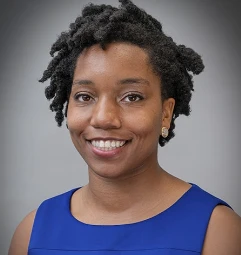During the COVID-19 pandemic, the world witnessed an extraordinary surge in the utilization of online grocery services.
As of July 2019, only 20% of customers in the US had ever experienced the convenience of buying groceries online.
However, in June 2020, merely three months into the pandemic, nearly 80% of shoppers had turned to online platforms to order their groceries (Morgan, 2020).
This remarkable shift resulted in a staggering sixfold increase in the online grocery shopping market share, skyrocketing from $1.2 billion in August 2019 (pre-pandemic) to a whopping $7.2 billion in June 2020 (amid the pandemic).
The surge in demand can be attributed to customers’ eagerness to pay for online delivery services to minimize their exposure to the risk of contracting COVID, along with the implementation of lockdown measures, or a combination of these factors.
Without a doubt, the COVID pandemic acted as a catalyst for the meteoric rise of online grocery shopping, and experts predict that this trend will continue long after the pandemic subsides (McKinsey & Co., 2022).

As online grocery shopping becomes increasingly prevalent, it has significant implications for mobility patterns. Rather than individuals driving to the store, delivery vehicles now traverse multiple homes on a single tour to fulfill grocery orders.
Consequently, delivery can both displace and add to in-person grocery shopping trips. The consequences of these shifting dynamics on the mobility ecosystem remain uncertain.
While online grocery shopping has the potential to reduce the number of cars on the road when delivery routes cater to multiple homes, easing congestion and lowering emissions, it may also introduce system-wide inefficiencies and exacerbate congestion and emissions within a region if it leads to more trips to and from grocery stores.
This study endeavors to identify the types of consumer behavior and delivery optimization levels that yield positive improvements or inefficiencies and quantify their impacts on emissions, energy consumption, and traffic congestion in various scenarios.
Understanding these impacts is crucial to developing sustainable and environmentally friendly solutions amidst the changing landscape of grocery shopping habits.
Based in Seattle, WA, the study examined consumer mobility patterns between in-person shopping and utilizing delivery vehicles. The researchers explored whether grocery delivery could reduce the number of cars on the road, ease congestion, and lower emissions.
This was no short, quick study either. The overall trip dataset contained roughly 47,918 entries, each of which represented a trip that was reported by one of the 10,825 surveyed individuals from 5,814 households.
Surprisingly, the study found that online grocery delivery was actually less energy-efficient than individual trips to the store.
Destenie Nock, an assistant professor of civil and environmental engineering and public policy at CMU, explains that most people already try to optimize their grocery trips by stopping to shop on their way home from work or during times that avoid peak-traffic hours. This behavior unintentionally reduces congestion on roadways, making individual grocery trips surprisingly sustainable.
“This is good because it doesn’t add to congestion on the roadways, turns out most people already try to optimize their grocery trips.”
Destenie Nock, assistant professor of civil and environmental engineering and public policy at CMU

The study analyzed several factors, including:
- Batch size (how many groceries are delivered in one route)
- Substitution rate (online deliveries replacing personal trips)
- Penetration rate (the number of people using online delivery in a given area)
- Delivery time (peak-hour delivery)
- Grocery store location (proximity to the customer’s home)
- Trip type (grocery trip in conjunction with other destinations or direct from home and back)
Interestingly, even with high batch sizes of 10 groceries delivered per route, the results showed net increases in emissions and energy use for delivery personnel. Altering these factors had little impact on sustainability.
However, the study did find a potential solution for reduced congestion: if consumers buy from grocery stores close to their homes during peak delivery times instead of visiting the stores in person.
CMU’s assignment model utilized publicly available data from the Puget Sound Regional Council (PSRC) in Seattle.
This study has resulted in a valuable tool that PSRC and other metropolitan planning organizations can use to integrate e-commerce and grocery delivery trends into long-range transportation planning.
While online grocery delivery may be a convenient option for many, this study highlights the importance of carefully considering the environmental impact of such services.
Opting for in-store shopping when feasible or choosing local grocery stores for peak-hour delivery may contribute to more sustainable practices.
More To Discover
- Graveyard of Massive Wind Turbine Blades Have Taken Over Texas Town, Making It the Epicenter of Greenwashed Waste
- Iceland Plans To Drill Into The Heart of a Volcano for Limitless Geothermal Power
- 15 Major Issues Impacting Biodiversity in 2024: What You Need to Know, Summarized
- Bill Gates’ TerraPower Partners with Largest Shipbuilder for Clean Nuclear-Powered Ocean Shipping
As we navigate the future of grocery shopping, understanding the environmental implications is crucial to creating a greener and more sustainable society.
Source: Science Direct



















